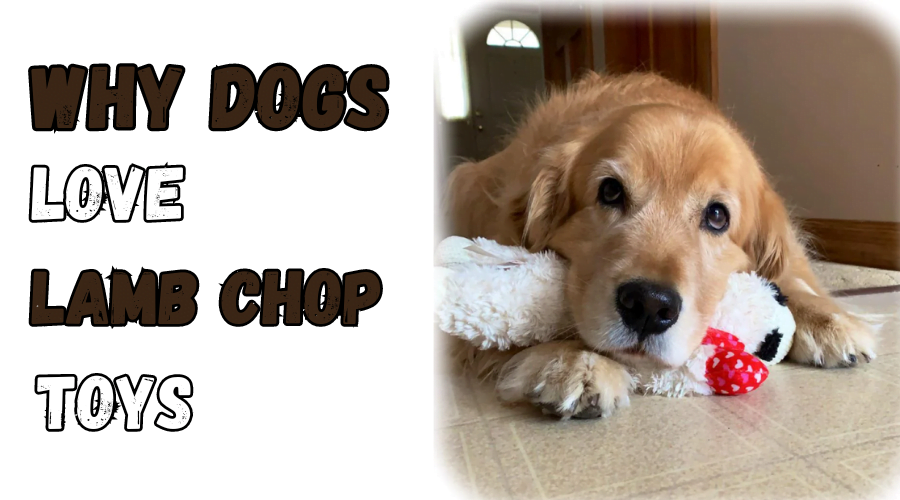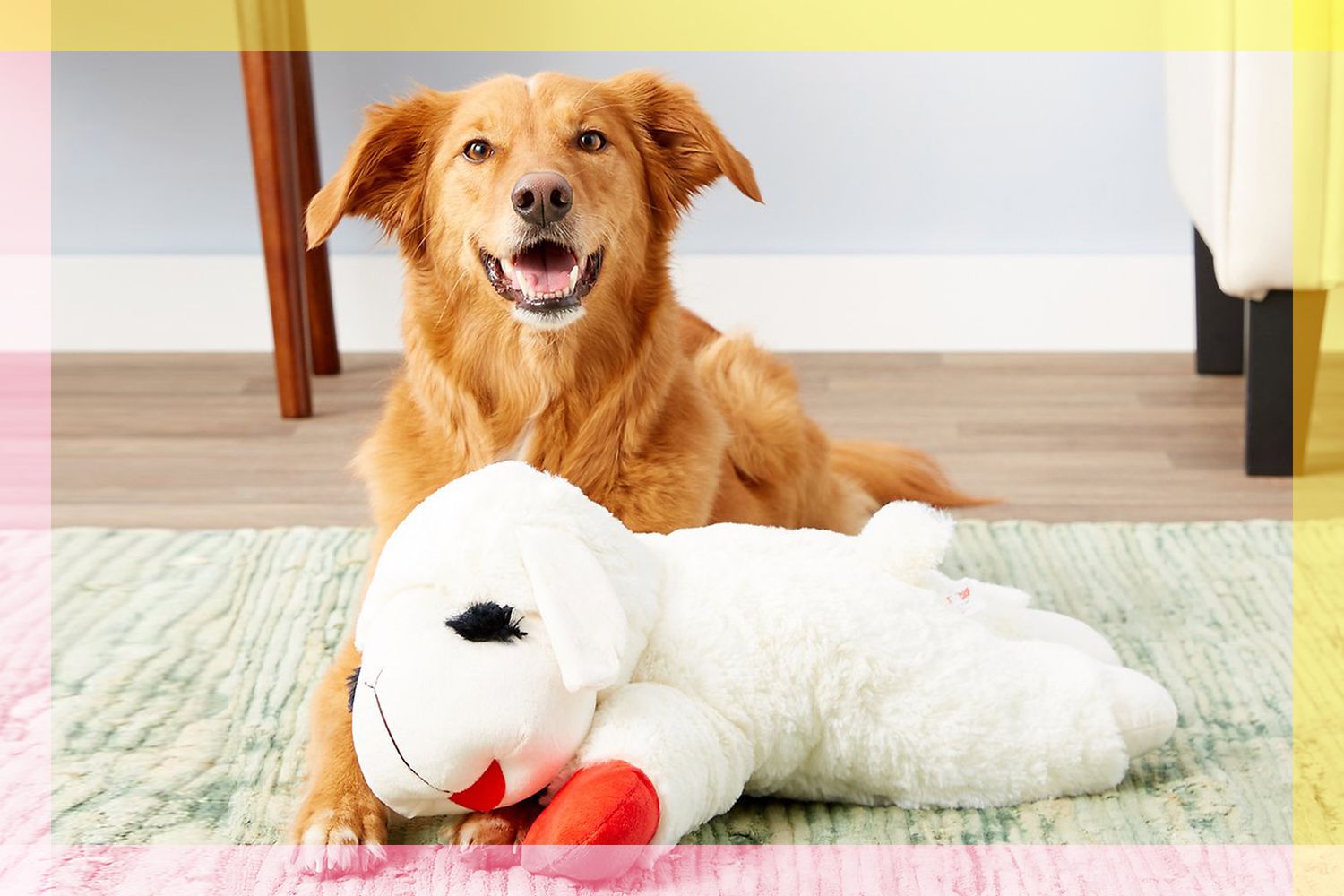Introduction to Canine Attachment
Canine attachment refers to the emotional bond that dogs form with their owners or other significant individuals in their lives. It is a concept that Why Dogs Love Lamb Chop Toys attention in recent years as researchers and dog owners alike recognize the importance of understanding and nurturing this bond. Just like human attachment, canine attachment plays a crucial role in a dog’s overall well-being and behavior. By understanding the nature of canine attachment, dog owners can develop stronger relationships with their pets and provide them with the care and support they need.
The Role of Toys in Canine Attachment
Toys play a significant role in canine attachment. They can become objects of attachment for dogs, providing them with comfort, security, and entertainment. Dogs often form strong emotional connections with their toys, treating them as companions or even surrogate pack members. This attachment to toys is particularly important during a dog’s early development, as it helps them learn important social and emotional skills.
Toys also serve as a form of mental and physical stimulation for dogs. They provide an outlet for their natural instincts, such as chewing, chasing, and retrieving. Engaging in play with toys helps dogs release pent-up energy, reduce boredom, and alleviate stress. Additionally, toys can be used as tools for training and behavior modification, making them an essential part of a dog’s life.
Why Do Dogs Love Lamb Chop Toys?
Lamb chop toys have become a favorite among many dogs, and there are several reasons for this attachment. Firstly, the soft texture and plush material of lamb chop toys make them appealing to dogs. Dogs are naturally drawn to objects that are soft and cuddly, as they mimic the feeling of being close to another living being. The familiarity of the lamb chop toy’s texture may also remind dogs of their mother or littermates, providing them with a sense of comfort and security.
Secondly, the shape and size of lamb chop toys make them easy for dogs to carry, chew, and play with. The elongated body and floppy limbs of the toy make it ideal for dogs to grab and shake, satisfying their natural prey drive. The size of the toy also makes it suitable for dogs of different breeds and sizes, ensuring that it can be enjoyed by a wide range of dogs.
Lastly, the association between lamb chop toys and positive experiences can contribute to a dog’s attachment to them. If a dog receives praise, treats, or playtime when interacting with their lamb chop toy, they are likely to form a positive association with it. This positive reinforcement strengthens the bond between the dog and the toy, making it even more appealing to the dog.
The Science of Canine Play Behavior
The scientific study of canine play behavior has provided valuable insights into the role of play in attachment. Play behavior is a natural and instinctive behavior observed in many animal species, including dogs. It serves several important functions, including socialization, skill development, and the establishment of social bonds.
Canine play behavior involves a variety of actions, such as chasing, wrestling, biting, and vocalizing. It is characterized by its voluntary nature and lack of aggression. Play allows dogs to practice important social skills, such as communication, cooperation, and conflict resolution. It also helps them develop physical coordination, strength, and agility.
Also read whole foods st pete, and Why Dogs Love Lamb Chop Toys
The Importance of Play in Canine Development
Play behavior plays a crucial role in canine socialization and development. Through play, puppies learn how to interact with other dogs and humans, establish boundaries, and communicate effectively. It helps them develop social skills that are essential for forming healthy relationships throughout their lives.
Play also provides mental and physical stimulation for dogs. It helps them burn off excess energy, reduce stress, and prevent boredom. Regular play sessions can contribute to a dog’s overall well-being and prevent behavioral problems associated with pent-up energy or lack of mental stimulation.
Furthermore, play behavior can strengthen the bond between dogs and their owners. When dogs engage in play with their owners, it creates positive associations and reinforces the dog’s attachment to their human companion. Play can also be used as a training tool, as dogs are more likely to respond to commands and learn new behaviors when they are in a playful and relaxed state.
The Evolutionary Basis of Canine Attachment
The strong attachment between dogs and humans can be traced back to their evolutionary history. Dogs are descendants of wolves, which are highly social animals that live in packs. Wolves form strong bonds with their pack members, relying on each other for survival and protection.
When humans domesticated dogs thousands of years ago. They became part of human social groups and formed similar bonds with their human companions. This co-evolutionary process led to the development of a unique attachment between dogs and humans. Characterized by loyalty, trust, and mutual dependence.
The Neurochemistry of Canine Attachment
The neurochemical processes involved in canine attachment are similar to those observed in human attachment. When dogs form strong emotional bonds with their owners, certain neurotransmitters and hormones are released in their brains, contributing to feelings of love, trust, and attachment.
One of the key neurotransmitters involved in canine attachment is oxytocin. Oxytocin is often referred to as the “love hormone” because it is released during social bonding and positive social interactions. It plays a crucial role in maternal bonding, pair bonding, and social attachment in both humans and animals.
The Role of Oxytocin in Canine Attachment
Oxytocin plays a significant role in canine attachment. When dogs interact with their owners or engage in positive social interactions, oxytocin is released in their brains. This release of oxytocin promotes feelings of love, trust, and attachment towards their owners.
Studies have shown that oxytocin levels increase in both dogs and their owners during positive interactions, such as petting, playing, and gazing into each other’s eyes. This increase in oxytocin strengthens the bond between dogs and their owners and reinforces their attachment to each other.
The Impact of Human Interaction on Canine Attachment

Human interaction can have a profound impact on canine attachment. Positive interactions, such as affectionate touch, play, and praise, can strengthen the bond between dogs and their owners. These interactions trigger the release of oxytocin in both the dog’s and the owner’s brains, reinforcing the attachment between them.
On the other hand, negative interactions or lack of socialization can weaken canine attachment. Dogs that are subjected to harsh treatment, neglect, or isolation may develop insecure attachment styles or exhibit fearful and aggressive behaviors. It is crucial for dog owners to provide their pets with a safe and nurturing environment, filled with positive interactions and socialization opportunities.
FAQs
1. Can all dogs form strong attachments to toys?
While most dogs form attachments to toys, the intensity of this attachment can vary between individuals. Some dogs may become highly attached to specific toys, while others may show less interest or attachment.
2. Are lamb chop toys safe for dogs?
Lamb chop toys are generally safe for dogs, but it is important to choose toys that are appropriate for your dog’s size and chewing habits. Always supervise your dog when playing with toys to prevent choking or ingestion of small parts.
3. Can dogs form attachments to multiple toys?
Yes, dogs can form attachments to multiple toys. They may have different preferences for different types of toys or develop attachments to toys that provide different types of stimulation.
The Importance of Understanding Canine Attachment for Dog Owners
Understanding canine attachment is crucial for dog owners. Because it allows them to develop stronger relationships with their pets and provide them with the care and support they need. By recognizing the importance of attachment. Dog owners can create a nurturing environment that promotes positive interactions and strengthens the bond between them and their dogs.
Understanding canine attachment also helps dog owners recognize and address behavioral issues that may arise from insecure attachment or lack of socialization. It allows them to provide their dogs with the necessary training. Socialization, and mental stimulation to promote healthy attachment and prevent behavioral problems.
Conclusion: The Enduring Love Between Dogs and Lamb Chop Toys
In conclusion, canine attachment is a complex and important concept that plays a significant role in a dog’s overall well-being and behavior. Toys, such as lamb chop toys, can become objects of attachment for dogs, providing them with comfort, security, and entertainment. Understanding the science behind canine attachment, play behavior, and the neurochemistry involved can help dog owners develop stronger relationships with their pets and provide them with the care they need.
The enduring love between dogs and lamb chop toys is a testament to the power of attachment in canine development. These toys offer dogs a sense of comfort, companionship, and playfulness. By recognizing the importance of attachment and providing dogs with toys that they can form attachments to, dog owners can enhance their pets’ quality of life and strengthen the bond between them.
Also Read about sorcerous pet food conan exiles


